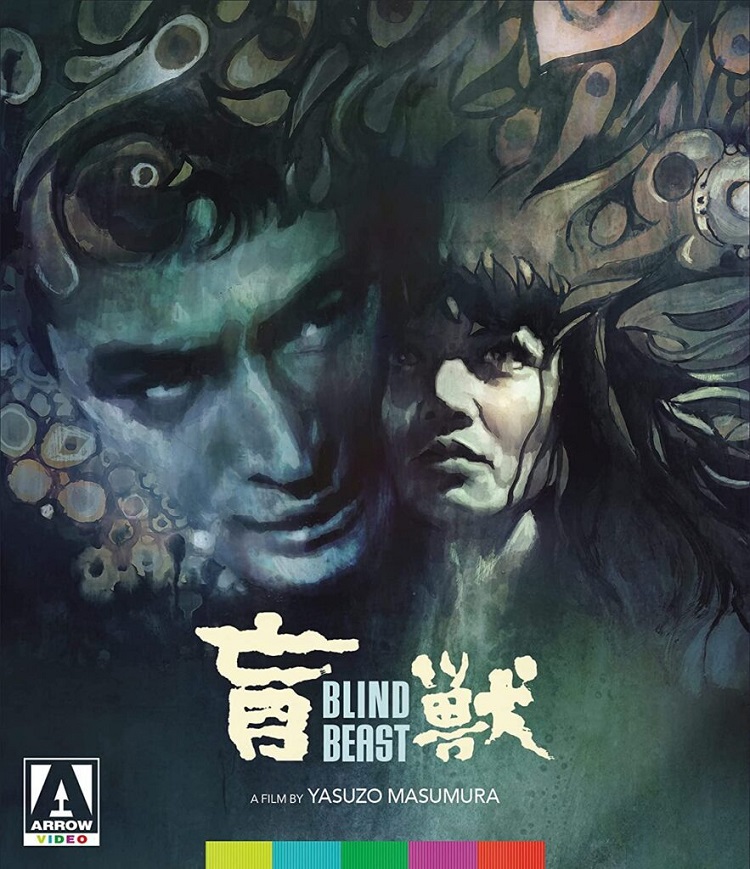
When an alluring young fetish model named Aki visits a gallery exhibiting her nude works, she’s shocked to find a blind man caressing a statue of her figure. That shock is amplified when he later appears at her home in the guise of her masseur, and peaks when he kidnaps her to a remote studio filled with his amateur sculptures of body parts. Michio explains that he has fallen in love with her body and demands to make a sculpture of her before he will consider releasing her. He’s aided by his elderly mother, who caters to his every need and ensures that Aki can’t escape, even though she can’t stand the seemingly trampy young woman who has so bewitched her son.
The film is at its best when the captive Aki starts poking apart the relationship dynamic between the fully grown but totally dependent man and his nurturing old mother, peeling back the layers of their weird symbiotic union to force them both to realize how aberrant they are. Unfortunately, that revelation and resulting scuffle also lead to the tragedy of the mother’s accidental death, moving the film into its lurid final act where the artist and model become lovers and succumb completely to the depths of their depravity. While it’s shocking to see how far they take their relationship, it’s also the only time the film becomes fully uncomfortable, somewhat diminishing the power of what had been an interesting character study up to that point.
Of course the film was designed from the start to be controversial, so the real surprise just might be how unobjectionable and discreet the film remains until nearly the end, with Masumura shooting it in a way that shows very little skin since it’s mostly obstructed by the artist’s constantly groping hands. The visually engaging artist’s studio is filled with dozens of huge sculptures of body parts on the walls, as well as two gigantic full female body statues on the ground, adding to the artsy feeling of the film. The subject matter is clearly sensational, but with Masumura’s assured guidance, the results are more akin to a compelling play than a trashy sleazefest.
The new hi-def master was provided by Kadokawa Pictures, the current studio owner of the works of original studio Daiei Film, with additional grading by Arrow Films. The film is presented in its original aspect ratio of 2.35:1 with mono sound. Colors and contrast remain stable throughout all scenes, with just a few specks of debris still remaining on the mostly clean transfer.
Bonus features include a newly filmed “introduction” by Japanese cinema expert Tony Rayns that is less like a simple welcome to the film and more like an informative dissertation about the film, the career of its director, and the industry at that time. Less worthwhile is a new visual essay about the film by Seth Jacobowitz that plays more like a basic overview of the plot rather than any meaningful commentary. Bonus features are rounded out with the original trailer and a robust collection of stills including some original lobby cards. The booklet included in the case also has a lengthy essay about the film, as well as Masumura’s full detailed filmography. The cover art features a newly commissioned piece by Tony Stella, but is also reversible for viewers wishing to display the original poster art. Arrow has done a reliably fine job producing this carefully curated release, making it an essential addition to the collections of fans of the film.